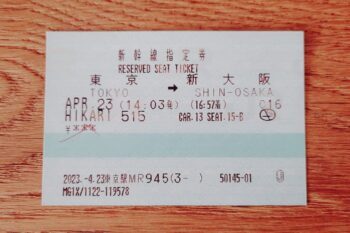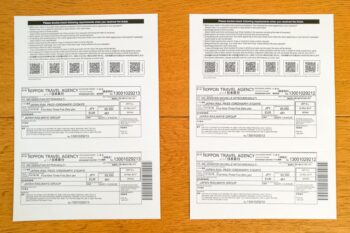Japan Rail Pass
Our experiences and tips for the Japan Rail Pass
Latest update: July 14, 2023
In a nutshell: Our experiences with the Japan Rail Pass
- Traveling by train is the fastest and most convenient way to get around Japan.
- Japan Railways has a great offer for foreign tourists: the Japan Rail Pass. You can buy it online in advance.
- With the Japan Rail Pass you can use almost all trains in the Japan Railways network for 7, 14 or 21 days.
- Train travel in Japan is not cheap, so the Rail Pass is worth it for most travelers.
We traveled through Japan with the 21-day pass and will answer all your questions about the Japan Rail Pass and give you some tips on how to best get around Japan by train.
What will change in October 2023?
If you buy your voucher in October 2023 or later, you should first read this section. Some Japan Rail Pass conditions will change for you then. We summarized the changes for you here. Otherwise, the information below in the article will still apply to you.
- Price increase of around 70 percent
- No more third-party discounts (10 percent)
- No more on-site sales in Japan
- Nozomi and Mizuho trains can be used for a small extra fee
- Discounts for certain attractions
How much will the JR Pass cost from October 2023?
You can see the prices of the Japan Rail Pass as of October 2023 here. In order for it to be worthwhile for you even after the price increase, you will have to travel much more by train in Japan than before. In the section about prices you will find an overview with some typical routes and their prices, so that you can easily do the math.
| Standard | Green Car (1st class) | |
|---|---|---|
| 7 days | 50,000 Yen (about 330 euros) | 70,000 Yen (about 460 euros) |
| 14 days | 80,000 Yen (about 530 euros) | 110,000 Yen (about 725 euros) |
| 21 days | 100,000 Yen (about 660 euros) | 140,000 Yen (about 920 euros) |
Where will you buy the JR Pass?
You can currently buy the Japan Rail Pass at local sales points in Japan. However, this will be discontinued by the end of March 2024.
Until then, the pass will still be ten percent cheaper at third-party retailers. This discount will then no longer apply, and the pass will cost the same at third-party retailers as on the official JR website.
When will the changes apply?
The changes will be in effect from October 2023, but you will be able to purchase your JR Pass from third-party retailers up to three months prior to activation (so before your trip to Japan). That means if you get your Japan Rail Pass from a website like jrailpass.com by October 2023, the old conditions will apply to you until December 2023. This is a huge advantage of the third party providers!
Now you know what will be changing with the Japan Rail Pass from October 2023. The following information in the article is valid until October 2023.
Where to buy the Japan Rail Pass?
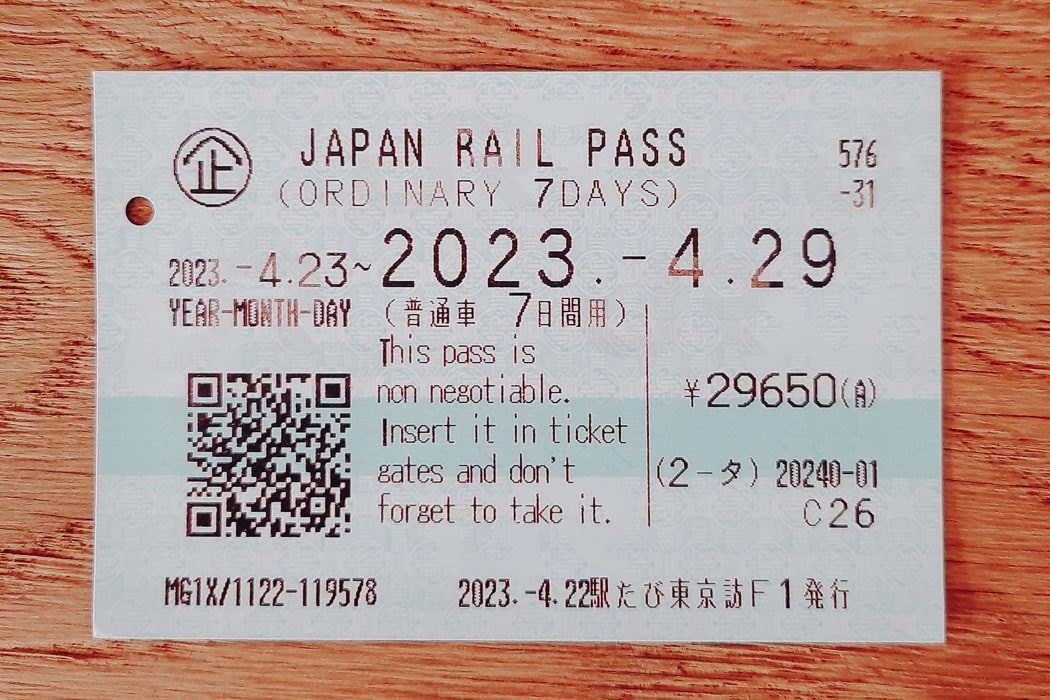
The Japan Rail Pass is an offer from Japan Railways (JR) that is aimed exclusively at foreign tourists.
When making your reservation you will receive a voucher for the Japan Rail Pass, which you then exchange for the actual Rail Pass at a local Japan Railways exchange station. You will have to show a passport to prove that you have a temporary visitor visa.
There are three possibilities to purchase the vouchers:
- at the JR sales points in Japan (10 percent more expensive)
- make a reservation on the official JR website (10 percent more expensive)
- buy online with third parties
Our tip: We bought our Japan Railpass at jrailpass.com and were very happy with the handling. We received the passes two days after we placed the order and it is just as expensive as on the official website.
Payment is made either by bank transfer or for an additional fee by credit card or Paypal. If you pay via bank transfer, shipping will take a little longer as passes will not be shipped until the payment is received.
The fees for the credit card payment or payment via Paypal is about 3.5% of the order value. We therefore recommend that you do not order at the last minute and pay by bank transfer. This will take 1-2 days longer, but it’s cheaper.
How much does the Japan Rail Pass cost?
You can choose between a 7-, 14- and 21-day pass. The prices are in Yen, but are paid in your currency. Depending on the exchange rate, the price can therefore always fluctuate slightly.
Kids under the age of six can ride for free. In Japan, the First Class is called Green Car.
| Standard | Standard kids | Green Car | Green Car kids | |
|---|---|---|---|---|
| 7 days | 29,650 Yen (about 200 euros) | 14,820 Yen (about 100 euros) | 39,600 Yen (about 270 euros) | 19,800 Yen (about 135 euros) |
| 14 days | 47,250 Yen (about 320 euros) | 23,620 Yen (about 160 euros) | 64,120 Yen (about 435 euros) | 32,060 Yen (about 215 euros) |
| 21 days | 60,460 Yen (about 410 euros) | 30,220 Yen (about 205 euros) | 83,390 Yen (about 565 euros) | 41,690 Yen (about 280 euros) |
Is the Japan Rail Pass worth it?
At least until October 2023, the Japan Rail Pass is worth it for most tourists. You can easily calculate for yourself. In our overview you will find typical routes and prices without the JR Pass.
Buy the Japan Rail Pass online
There is an overview of the changes as of October 2023 at the beginning of the article.
Longer distances with the Shinkansen (prices for one way):
Tokyo – Kyoto = 13,850 Yen
Tokyo – Osaka = 14,720 Yen
Tokyo – Hiroshima = 18,910 Yen
Kyoto – Hiroshima = 11,300 Yen
Osaka – Hiroshima = 10,420 Yen
Kyoto – Himeji = 5,370 Yen
Osaka – Himeji = 3,810 Yen
Hiroshima – Himeji = 8,440 Yen
Shorter distances and day trips (prices for a round trip):
Tokyo – Narita Airport = 6,440 Yen
Tokyo – Kamakura = 1.840 Yen
Tokyo – Nikko = 11,560 Yen
Kyoto – Nara = 1,420 Yen
Kyoto – Osaka = 1,120 Yen
Osaka – Nara = 1,600 Yen
Hiroshima – Miyajima = 1,180 Yen
Where can you exchange the voucher for the pass?
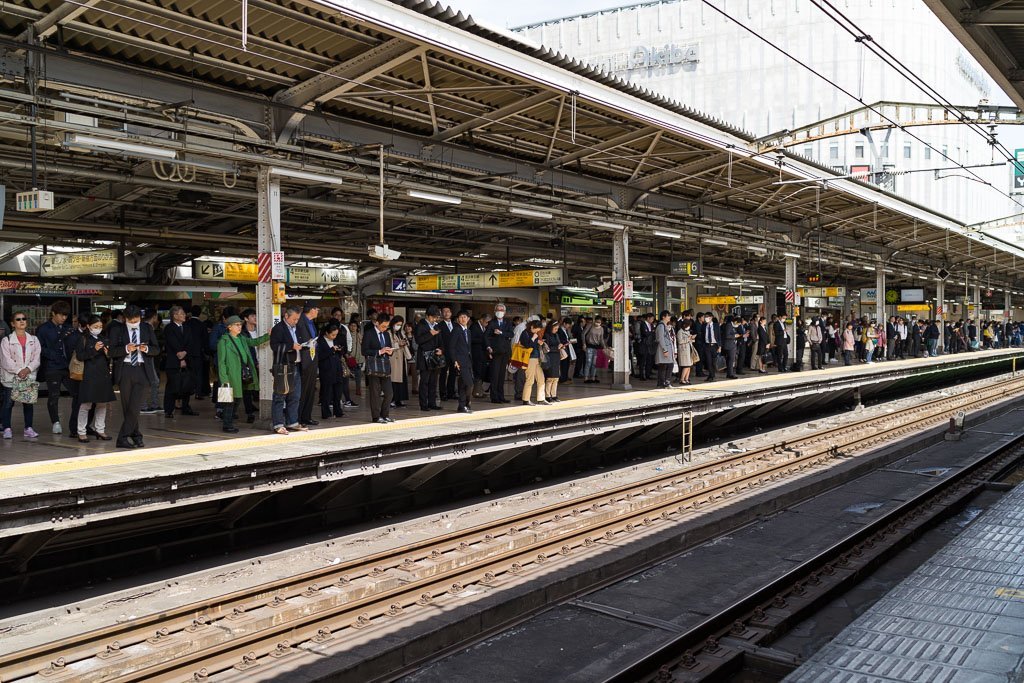
The voucher you purchased at home can be exchanged for the actual Japan Rail Pass at most major train stations in Japan. Just look for a sign that says something like “JR Pass Exchange”. You can find a complete list of the stations in Japan where to exchange your vouchers on this Japan Railways webpage.
Important: You must bring your passport with you to exchange it, otherwise you won’t get your Rail Pass.
In Tokyo you can exchange your voucher at the following stations:
- Tokyo Station
- Shinjuku
- Shibuya
- Ikebukuro
- Shinagawa
- Ueno
- Haneda Airport
- Narita Airport
When you exchange your Rail Pass, you will be asked from which day the Japan Rail Pass should be valid. If you are in Japan for 24 days, but plan to spend the first three days in Tokyo only, it makes sense to choose the starting date on the fourth day of your journey.
Unless you don’t plan on taking the train until the end of your journey and live in an area of Tokyo where you will have to rely on the JR subway line. In that case, you can use the Rail Pass as a subway ticket, too.
Once the date has been entered, it cannot be changed.
Which trains can I use with my Rail Pass?
- Shinkansen trains
- Narita Express
- Circle line in Tokia and Osaka
- Hiroshima sightseeing bus
- Ferry to Miyajima
- Nozomi- and Mizuho Shinkansen
- Subways
- Privat trains
With the Japan Rail Pass you can use almost all trains of the state railway company Japan Railways (JR). You can travel as often and as long as you want during the validity period.
Also included, of course, are the Shinkansen high-speed trains, with which you can get from A to B very quickly. The only exceptions are the Nozomi and Mizuho-Shinkansen.
These are particularly fast trains, which make fewer stops than the normal Shinkansen. On these routes there are also normal Shinkansen, which you can use with the Japan Rail Pass.
Tip: If you start or land at Narita Airport, you can also use the Narita Express with the Japan Rail Pass to get to the center of Tokyo. That’s a nice saving, since this trip would cost you around 30 euros.
There is a counter at the airport where you can exchange your voucher directly and then use the Narita Express. Check here if the office is open at your arrival time.
Unfortunately, the JR pass does not include all subways in the various cities, such as Tokyo. Only those subways operated by Japan Railways are included. There are also several private trains in the country that are not operated by the Japan Rail Pass. So always make sure that you catch a train from JR.
In Tokyo and Osaka there is a kind of circle line, with which you can reach many sights in the city area. These trains are also operated by JR and are included in the Rail Pass. So you can save some trips with the subway here.
In Hiroshima you can also use a sightseeing bus with the JR Pass and the ferry to Miyajima Island.
Do I need a seat reservation?
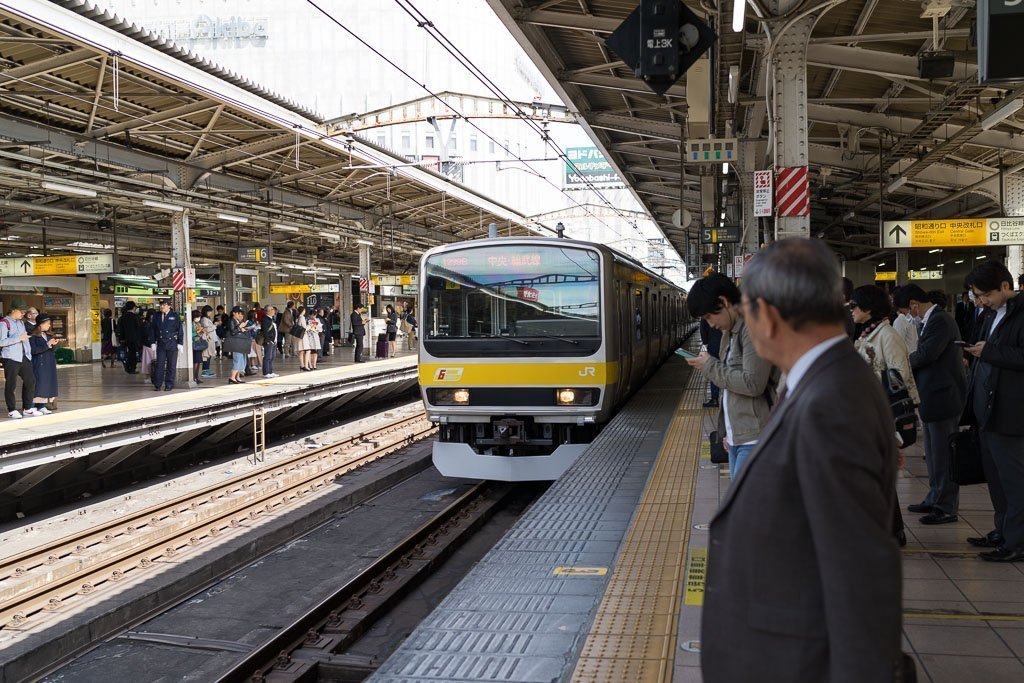
With the Japan Rail Pass, you can reserve seats for free. Just go to one of the many ticket counters and tell them for which train you want to make a reservation.
On our trips it was never so crowded that a reservation was really necessary. A reservation is possible until shortly before the start of the journey, you can of course also reserve a few days in advance.
You can also make reservations for large pieces of luggage. Large items are stowed in the front and rear of the cars. If you don’t reserve a spot and someone else has, for example for a stroller, you will lose out. So it’s always better to also add a reservation for your luggage when making a seat reservation.
Small pieces of luggage can easily fit in the storage compartments above you or the legroom.
Reservations are only possible on national trains such as Shinkansen and Limited Express. There are no reserved seats on regional trains.
Our tip: If you are traveling from Tokyo to Kyoto or Osaka, it is best to reserve one day in advance and ask for a seat on the right side of the train. If the weather plays along, you will have a great view of Mount Fuji. The opposite direction to Tokyo is best to get a seat on the left side.
How do I use the Japan Rail Pass?
All stations in Japan have electronic barriers at the entrance and exit. You can use your JR Pass there at the start and end of your trips. But remember, when you stick your pass in, it will come out on the other side of the machine, so don’t forget to take it with you.
Important: On the trains, the Rail Passes may be checked again. We were only asked for our Rail Pass once on the train. You will then need to show your passport, too.
General tips and information about train travel in Japan
Traveling by train in Japan is definitely a very pleasant experience. The trains are always on time and incredibly fast. In three weeks all our trains left and arrived on time. Awesome!
Nevertheless, a few things are good to know and we wrote them down for you in the next section.
What types of trains are there?
There are a lot of different types of trains in Japan.
Shinkansen
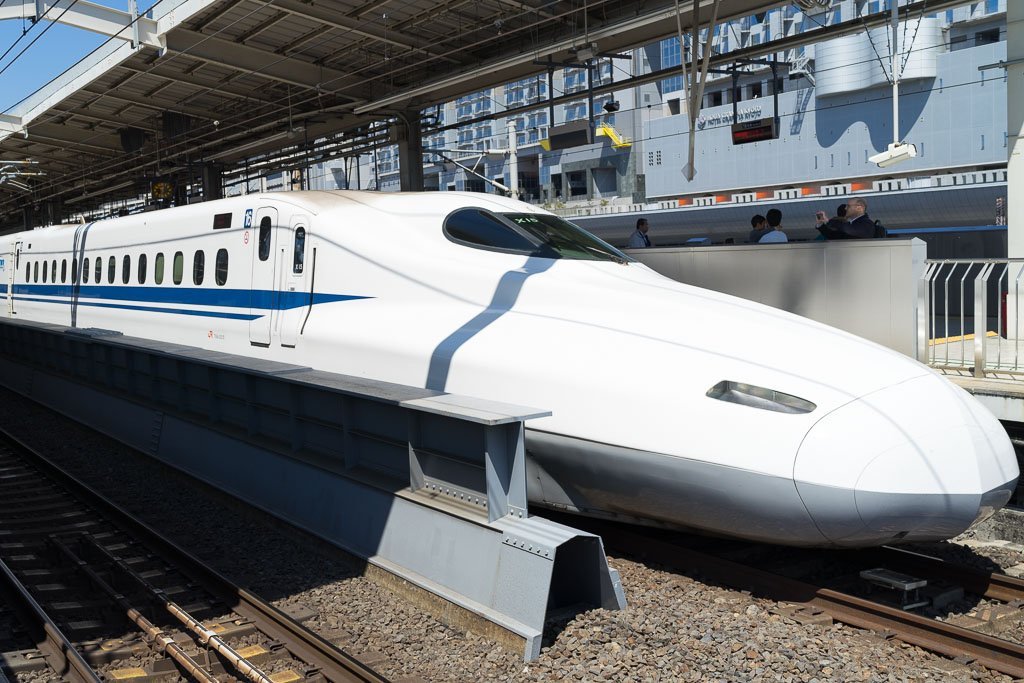
The best known is of course the Shinkansen, also known as the Bullet Train. Its futuristic appearance is known far beyond the borders of Japan.
The Shinkansen trains connect the big cities and are extremely fast. Unlike the ICE in Germany, for example, the Shinkansen run on their own tracks. So you never get stuck behind a regional train running in front of you.
The Shinkansen reaches speeds of up to 320 km/h and a distance of 800 kilometers can be covered in about 4 hours.
The individual Shinkansen have names such as Nozomi, Hikari and Sakura. All Shinkansen except Nozomi and Mizuho can be used with the Japan Rail Pass.
More JR trains in Japan
The fastest trains, after the Shinkansen, are the so-called Limited Express. In contrast to the Shinkansen, they also connect smaller cities. Then there’s the Rapid Express, the Express and lastly the local trains.
Local trains are the slowest in Japan. They are comparable to suburban trains and stop every few minutes at every small station. Seat reservations are not possible and local trains can get very crowded during rush hours.
Private railways in Japan
In addition to the trains of the state-owned railway company JR, there are also a number of private railways in Japan. These usually run on regional routes and some even have their own stations. The Japan Rail Pass is not valid for these trains.
For most lines you can choose between JR and a private railway. However, there are also routes on which only private trains run. But this is rather rare.
What is the name system for the trains?
Shinkansen and Limited Express trains have a name and a train number. A Shinkansen could then be called Hikari 472, for example. The name of the train is on your reservation receipt, so you will know exactly which train is yours.
Regional trains don’t have train numbers. These trains are usually named after their destination. The regional train from Osaka to Nara, for example, is called Nara-Line.
Where can I find schedules for the trains in Japan?
There are two very good online sources where you can find out the departure times of the trains. Both have their advantages and disadvantages, but are generally recommended.
Google Maps
The Google Maps route planner works very well for train connections in Japan. Just click on the train symbol in your search and Google will spit out the best connection for you.
The most practical thing is that you can enter your hotel as the starting point and Google will calculate the best route including the footpath. Subways and buses are also part of the system, so the search is especially useful when you are on the move.
However, the search has one disadvantage: Google always only shows the fastest connection. So for the Shinkansen route Tokyo-Kyoto-Osaka-Hiroshima Google always suggests the Nozomi, which cannot be used with the Rail Pass.
For this you have to use option two.
Navitime
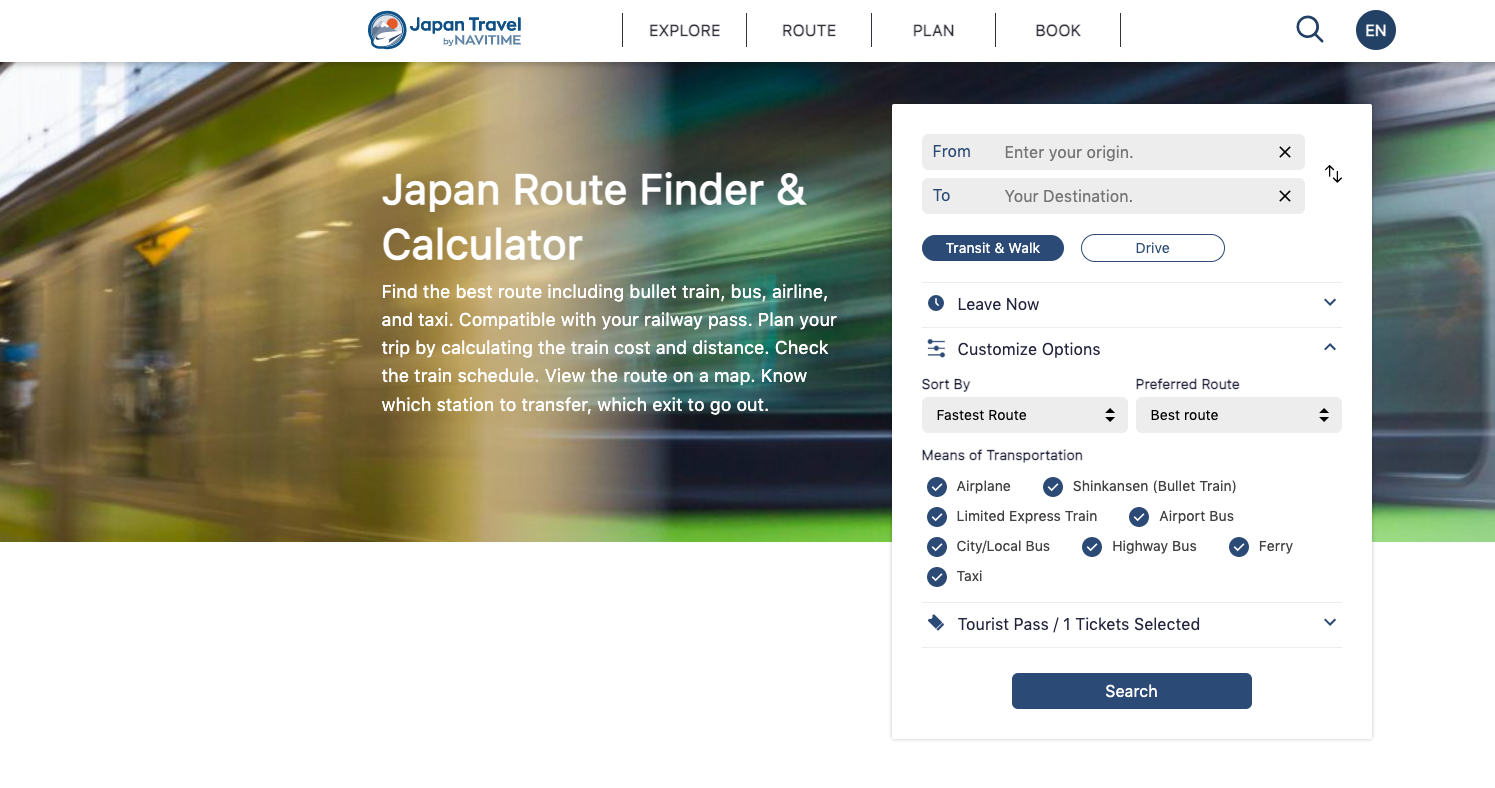
Compared to Google Maps, the Navitime website offers an even more detailed search. For example, you can specify that you want to see the fastest or cheapest connection on a route, or choose whether you want the Shinkansen as an option.
You can also specify that you are using the Japan Rail Pass, so you will only get the connections which can be used with the Japan Rail Pass.
Navitime also offers many other functions for travel or route planning in Japan.
If Google is stuck, Navitime is the solution.
Is there food on trains in Japan?
There are very few food options on the trains in Japan. Shinkansen and Limited Express have a mobile on-board bistro, meaning a friendly employee walks along the corridors with a cart, selling snacks and drinks and bowing down nicely when leaving each car.
On long journeys with the Shinkansen, we recommend that you buy something to eat beforehand. In the train stations the food is very good. There are often so-called Bento boxes in which sushi and other dishes are served. These are very tasty and the prices are absolutely okay.
Can I smoke in the trains?
Japan is a country of smokers and so it’s hardly surprising that smoking is still allowed on the trains. A Shinkansen with 16 cars usually has three to four cars for smokers.
When you reserve a seat, you will always automatically get a non-smoking ticket. If you want to sit in a smoking area, you have to state this explicitly when making your reservation.
Are there alternatives to train travel in Japan?
Of course you can choose a bus or domestic flight within Japan instead of taking the train.
Domestic flights in Japan operate between the major cities and can sometimes even be cheaper than a train ticket. However, the train is definitely the best option in terms of time, as the train stations are always in the middle of the city and the airports are often relatively far out.
The cheapest option to explore Japan is by bus. They are, of course, much slower and not as comfortable as the Shinkansen, but a good solution for travelers on a small budget.
Our conclusion on the Japan Rail Pass
We were very happy that we decided to get the Japan Rail Pass. Traveling by train was fast and comfortable and the Rail Pass cost us 100 euros less compared to the single price of the tickets. And somehow, traveling by train is also an integral part of a trip to Japan.
We can only highly recommend the Japan Rail Pass to every traveler to Japan.
Order the Japan Rail Pass here.
Do you also have experiences with rail travel in Japan? We are curious about your experiences and tips and look forward to your comments!

